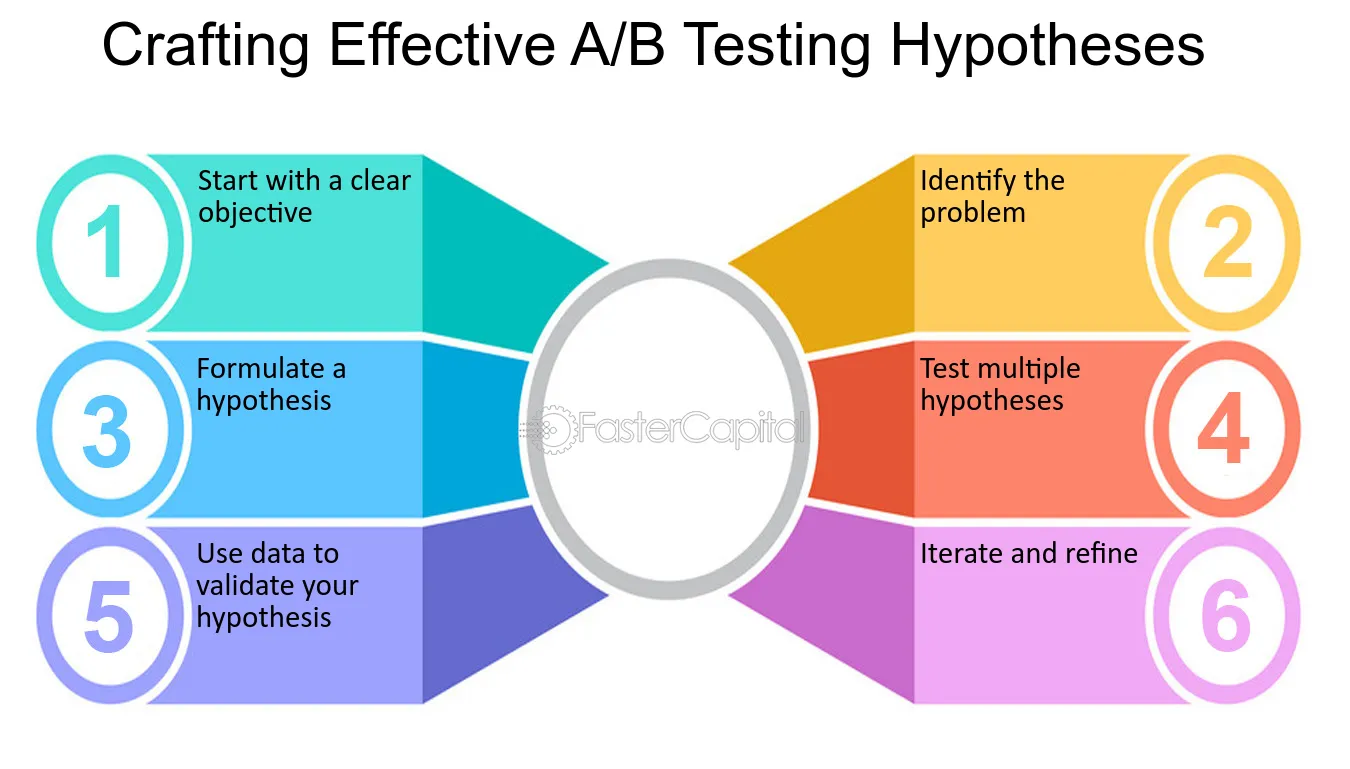Using Paid Ads for Email List Growth: Top Tips for Success
In the current digital world, companies are eager to find creative ways to grow their audience. A highly effective method is utilizing paid ads for email list growth. This tactic boosts brand visibility and establishes direct communication with potential customers via email. This blog post will discuss the significance of email list growth, types of paid ads, creating engaging ad campaigns, optimizing landing pages for conversions, and measuring results for sustained success.
Understanding the Importance of Email List Growth
In an age dominated by social media and instant messaging, the significance of email marketing cannot be overstated. Building a strong email list is crucial for any business looking to establish a reliable communication channel with its audience. The process of growing an email list involves more than just collecting addresses – it requires strategic planning and execution to maximize effectiveness.
The Value of a Strong Email List

An email list is akin to a goldmine for businesses; it represents a database of individuals who have expressed interest in your products or services. These contacts have opted-in to receive information from you, which indicates a level of trust and engagement that is often difficult to achieve through other channels. A strong email list allows businesses to nurture relationships with their customers, improve conversions, and generate repeat sales.
Moreover, having a robust email list provides invaluable insights into customer behavior. By analyzing open rates, click-through rates, and response patterns, businesses can tailor their marketing strategies to better meet the needs and preferences of their target audience. This personalized approach fosters loyalty among customers and encourages them to become advocates for the brand.
How Email Marketing Supports Business Goals

Email marketing serves as a powerful tool for achieving various business objectives. Whether the goal is to increase brand awareness, drive traffic to a website, or promote new products, a well-planned email campaign can effectively support these aims. Through targeted email communication, businesses can share valuable content, special promotions, and updates that resonate with their audience.
Additionally, email marketing is cost-effective compared to other forms of advertising. With a higher return on investment (ROI) than traditional marketing methods, businesses can allocate their resources more efficiently while still reaching a wide audience. Furthermore, the ability to segment an email list allows marketers to tailor messages specifically to different audiences, enhancing the relevance and impact of each campaign.
Key Metrics to Track for Email Campaign Success

To determine the effectiveness of email marketing efforts, it’s essential to track key performance metrics. Open rates indicate how many recipients are engaging with your emails, while click-through rates reveal whether they find your content appealing enough to take action. Conversion rates illustrate how many subscribers actually complete the desired action, such as making a purchase or signing up for a webinar.
Understanding these metrics enables businesses to refine their email marketing strategies continually. By identifying trends and patterns, marketers can make informed decisions about their future campaigns and implement changes that resonate with their audience. Regularly monitoring these metrics ensures that businesses remain responsive to customer preferences and adapt their strategies accordingly.
Different Types of Paid Advertising for List Growth

With a myriad of advertising options available today, businesses must carefully consider which paid advertising methods align best with their goals for email list growth. Each method offers unique advantages and caters to diverse audience segments. Here’s a closer look at some of the most popular types of paid advertising that can drive email list growth.
Pay-Per-Click (PPC) Ads
Pay-per-click (PPC) advertising allows businesses to place ads on search engines and pay only when someone clicks on their ad. This model is highly effective for generating immediate traffic and capturing leads. By targeting specific keywords related to their products or services, businesses can attract potential customers actively searching for solutions.
One of the primary benefits of PPC ads is the level of control they offer over targeting. Advertisers can specify demographics, interests, and geographic locations, ensuring that their ads reach the most relevant audience. Additionally, PPC campaigns can be optimized in real-time based on performance data, enabling businesses to adjust bids, modify ad copy, and enhance overall effectiveness quickly.
However, successful PPC campaigns require careful planning and consideration. Crafting compelling ad copy that resonates with the target audience is vital, as is selecting appropriate keywords. Businesses must also invest time in continuously monitoring and optimizing their campaigns to ensure they yield the desired results.
Social Media Advertising

Social media platforms present an ideal space for businesses to leverage paid advertising to grow their email lists. Platforms like Facebook, Instagram, Twitter, and LinkedIn offer targeted advertising options that allow businesses to reach users based on their interests, behaviors, and connections. This level of targeting significantly increases the likelihood of attracting potential subscribers who are genuinely interested in the brand.
Social media advertising typically features visually engaging content, making it essential for businesses to create eye-catching visuals and captivating headlines. By offering incentives such as free resources, exclusive discounts, or contests, brands can encourage users to sign up for their email lists. The use of lead generation ads—specifically designed to capture contact information directly within the platform—can further streamline the sign-up process.
It’s important to note that social media advertising requires ongoing engagement. To maintain interest and keep followers connected, businesses should regularly update their content, respond to comments, and share valuable information. This continuous effort helps build community and trust, ultimately fostering more subscribers.
Display Ads and Retargeting
Display advertising encompasses banners and visual ads placed on various websites across the internet. These ads can serve as excellent tools for building brand awareness and encouraging email list sign-ups. By strategically placing display ads on sites frequented by the target audience, businesses can capture attention and drive traffic to their landing pages.
Retargeting, or remarketing, is another potent technique within display advertising. It involves showing ads to individuals who have previously visited a website without taking any action—such as signing up for an email list. By reminding these visitors of the value offered, businesses can rekindle interest and encourage them to complete the sign-up process.
For retargeting ads to be effective, they should feature engaging visuals and persuasive messaging. Offering exclusive promotions or limited-time offers can create a sense of urgency, motivating potential subscribers to take action. Analytics tools can help businesses track the performance of their retargeting campaigns, enabling them to optimize their approach and identify opportunities for improvement continually.
Sponsored Content and Native Advertising
Sponsored content and native advertising blend seamlessly with the surrounding content on a website, providing a non-disruptive experience for users. Unlike traditional ads, these formats deliver valuable information aligned with the interests of the audience. Businesses can use sponsored articles, videos, or infographics to educate potential subscribers about their offerings and drive traffic to their email sign-up pages.
The key to success with sponsored content lies in creating high-quality, informative material that resonates with the audience. Instead of overtly promoting a product or service, brands should focus on providing value, establishing authority, and fostering trust. This approach naturally leads readers to want to learn more about the brand, encouraging them to join the email list for additional insights and updates.
Partnering with influencers or reputable publishers can amplify the effectiveness of sponsored content. By leveraging their existing audience, businesses can accelerate email list growth while simultaneously benefiting from the credibility associated with established voices in the industry.
Crafting Compelling Ad Campaigns

Successful email list growth through paid ads hinges on crafting compelling ad campaigns that capture attention and inspire action. Every element of the ad – from the target audience to the call to action – plays a critical role in determining its effectiveness. Businesses must consider several factors to create campaigns that resonate with their audience.
Identifying Your Target Audience
The first step in crafting a successful ad campaign involves identifying the target audience. Understanding who they are, what they need, and where they spend their time online is crucial. Businesses should conduct thorough market research, analyze customer personas, and evaluate competitor strategies to gain insights into their audience’s preferences.
Once the target audience is defined, businesses can tailor their messaging and visuals to align with their interests and pain points. Addressing specific challenges and offering solutions through compelling narratives can significantly enhance the appeal of ads. Additionally, understanding consumer behavior and motivations can guide businesses in creating incentives, such as opt-in freebies or exclusive content, that encourage email sign-ups.
Creating Engaging Ad Copy
Engaging ad copy is essential for capturing attention and driving clicks. The language used should reflect the brand voice while being conversational and relatable. Highlighting the benefits of subscribing to the email list – such as receiving exclusive content, discounts, or early access to new products – can motivate users to take action.
Using clear and concise language that speaks directly to the audience is key. Avoid jargon or overly complex phrases; instead, aim for straightforward communication. Incorporating emotional triggers, such as urgency or exclusivity, can enhance the persuasive power of the ad copy. For instance, phrases like “limited time offer” or “exclusive access” can compel potential subscribers to act quickly.
Designing Eye-Catching Visuals
Visual elements play a significant role in ad campaigns, as they are often the first thing viewers notice. High-quality graphics, vibrant colors, and compelling imagery can draw attention and entice users to learn more. The design should align with the overall brand aesthetic while standing out in a crowded marketplace.
Incorporating user-generated content or testimonials can enhance credibility and foster trust. Potential subscribers may feel more inclined to engage with a brand when they see that others have had positive experiences. Including visuals that illustrate the value of subscribing, such as screenshots of exclusive content or previous newsletters – can further entice users to sign up for the email list.
Utilizing Strong Calls to Action
A strong call to action (CTA) is a crucial component of any ad campaign. It should clearly communicate what action the audience should take and convey a sense of urgency or value. Phrases like “Join now for exclusive access” or “Sign up today and get 20% off” create an imperative that encourages potential subscribers to take immediate action.
CTAs should be prominently displayed within the ad, making them easy to spot and interact with. The design of the CTA button should stand out from the rest of the ad, using contrasting colors and bold fonts to grab attention. Testing different CTAs and placements can help determine which variations yield the highest conversion rates.
Optimizing Landing Pages for Conversions

Once potential subscribers click on an ad, they are directed to a landing page designed to convert them into email list members. The effectiveness of the landing page plays a pivotal role in determining the success of an ad campaign. Businesses should concentrate on creating highly optimized landing pages that facilitate conversions.
Elements of an Effective Landing Page
An effective landing page includes a clear and concise headline that aligns with the ad’s messaging. It should immediately convey the value proposition and explain why visitors should subscribe to the email list. Supporting details, such as bullet points or short paragraphs, can highlight key benefits and make the content easily digestible.
Incorporating visuals that reinforce the message and evoke emotion can enhance the overall appeal of the landing page. Additionally, including testimonials or reviews can build trust and credibility, helping visitors feel confident about joining the email list. The layout should prioritize readability, ensuring that crucial information stands out for users to quickly grasp the value offered.
A/B Testing for Better Results

A/B testing is an iterative process that allows businesses to compare two versions of a landing page to determine which one performs better. By testing different headlines, layouts, visuals, and CTAs, businesses can gain insights into what resonates most with their audience. This practice helps optimize landing pages for maximum conversions over time.
When conducting A/B tests, it’s essential to change only one element at a time to isolate the impact of each variation. Analyzing results and metrics can provide valuable feedback, guiding businesses toward data-driven decisions that improve performance. Continuous testing and refinement can lead to enhanced conversion rates and more effective email list growth.
Integrating Sign-Up Forms Seamlessly
Integrating sign-up forms seamlessly within the landing page is critical to achieving high conversion rates. Forms should be simple and user-friendly, asking only for essential information, usually just a name and email address. Reducing friction in the sign-up process encourages visitors to complete the form without feeling overwhelmed.
Consider utilizing pop-ups or slide-ins to capture attention without being intrusive. These elements can appear after a visitor has spent time on the page, indicating interest before prompting them to subscribe. However, it’s essential to strike a balance; excessive pop-ups can frustrate users and lead to higher bounce rates.
Ensuring Mobile Responsiveness
As mobile usage continues to rise, ensuring that landing pages are mobile-responsive is paramount. A significant percentage of users access websites through smartphones and tablets, meaning that landing pages must look great and function smoothly on all devices.
Responsive design involves adjusting elements like text size, images, and buttons to accommodate varying screen sizes. Conducting regular testing on multiple devices can help identify any issues that may hinder user experience. Prioritizing mobile responsiveness not only enhances user satisfaction but also boosts conversion rates as potential subscribers can easily navigate the site.
Measuring and Analyzing Results

Once ad campaigns are running and landing pages are optimized, the next step is to measure and analyze performance comprehensively. This data-driven approach allows businesses to evaluate their efforts, identify areas for improvement, and adjust strategies accordingly.
Tracking Performance Metrics
Tracking performance metrics is essential for understanding the effectiveness of ad campaigns and email list growth efforts. Metrics such as click-through rates, conversion rates, and cost per acquisition provide insights into how well ads are performing and whether they are generating quality leads.
Utilizing analytics tools can help businesses monitor these metrics over time, enabling them to identify trends and patterns. Once businesses understand which campaigns perform best, they can allocate resources more effectively and focus on strategies that yield the highest ROI.
Evaluating Return on Investment (ROI)
Evaluating the return on investment (ROI) is crucial to determining the long-term success of paid advertising efforts. It involves comparing the revenue generated from new subscribers against the costs incurred during advertising initiatives. This analysis helps businesses ascertain whether they are investing wisely in their email list growth strategies.
If the ROI is low, it’s essential to reassess both the ad campaigns and the landing pages. Identifying areas for improvement and making necessary adjustments can help increase profitability in future campaigns. On the other hand, if certain strategies prove to be highly effective, businesses can scale those efforts to capitalize on their success.
Adjusting Strategies Based on Data

Data analysis is only beneficial when it informs actionable changes. By evaluating performance metrics and gathering insights, businesses can adjust their strategies in real-time. This flexibility allows marketers to pivot their focus, experiment with new ideas, and refine existing tactics.
For example, if A/B testing reveals that a specific call-to-action yields higher conversion rates, businesses can prioritize that messaging in future campaigns. Similarly, if data shows that particular advertising channels drive more qualified leads, reallocating budget and resources to those platforms can enhance overall effectiveness.
Continuous Improvement Practices
Continuous improvement practices are essential for long-term success in email list growth. The digital landscape is dynamic; therefore, staying current with trends, technologies, and consumer preferences is vital. Regularly reviewing and updating marketing strategies can ensure businesses remain competitive and responsive to their audience’s needs.
Encouraging a culture of experimentation, where teams are open to trying new approaches and learning from outcomes – can foster innovation and growth. Sharing insights and successes across departments can enhance collaboration and drive collective efforts toward achieving shared objectives.
Final Thoughts
To sum up, utilizing paid advertising to enhance email list expansion is a calculated method that can deliver impressive outcomes when executed properly. By grasping the subtleties of different types of advertisements, creating engaging campaigns, refining landing pages, and evaluating results, companies can develop a strong email list that boosts interaction and revenue.
The combination of paid ads and email marketing provides businesses with an opportunity to cultivate relationships with their audience, encourage loyalty, and ultimately reach their objectives. As the digital environment continues to change, adopting innovative strategies and staying flexible will be essential for maintaining success in email list development.
Through ongoing dedication and a focus on improving methods, companies can leverage the effectiveness of paid ads to foster meaningful connections with their clients, resulting in sustained growth and profitability.




